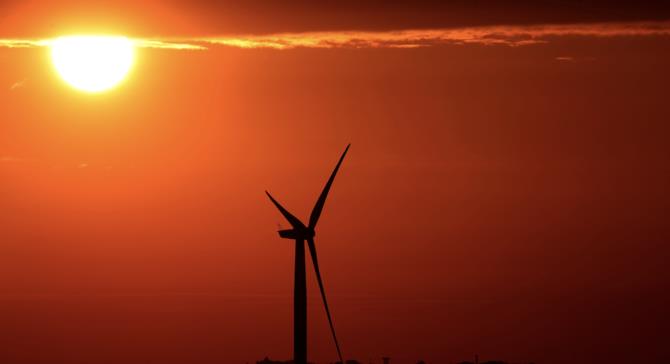
The oil-rich Gulf has become a key player in the growing renewable energy market. This will undoubtedly have a significant positive impact for the future of the region.
While the Gulf is known for its abundance of oil, it is also richly endowed with renewable resources, such as wind and sun. For example, located in the center of the so-called sun belt, Saudi Arabia has great potential to produce power from the sun. Jeddah, Riyadh and Dammam, which are the three of the largest cities in Saudi Arabia, enjoy an average irradiation of 5.78 kilowatt-hours per sq. meter per day, “which is significantly higher than the global value of 1.36 … The availability of raw materials in Saudi Arabia also contributes to it being considered an ideal location for the use of solar energy,” according to a report by Salah Ud-Din Khan, Irfan Wazeer and Zeyad Almutairi that was published in March.
Renewable energy is not just harvested from the sun and the wind. Some of the other best-known and most common renewable power technologies include biomass (energy produced from living or recently living organisms, such as plants and materials derived from plants), geothermal (thermal energy that comes from the earth), hydroelectricity (energy that is generated from water in motion), and wave and tidal power (energy harvested from the natural rise and fall of ocean waves and tides).
The increasing investment in renewable energy in the Gulf brings several benefits for the region. One of the most important advantages of using renewable energy is that it contributes to saving water. This is critical, as water scarcity is a growing challenge in the Middle East. This is due to the region’s “arid climate and high population growth. Many countries in the region are considered to be among the most water-stressed in the world, with limited freshwater resources and high water demand levels,” according to US nonprofit organization The Water Project.
Other benefits of the growing market in renewable energy in the Gulf include creating more jobs, protecting the environment by reducing carbon dioxide emissions, contributing to better public health, being cost-effective due to the reduction in the cost of energy, requiring less maintenance, and enhancing the reliability and security of the country’s power grid, along with increasing the nation’s energy independence and contributing to cleaner air by reducing air pollution.
One of the most important advantages of using renewable energy is that it contributes to saving water.
Dr. Majid Rafizadeh
Another key benefit linked to investment in renewable energy is economic diversification. In fact, economic diversification has been the goal of all Gulf economies since they began pumping oil out of the ground. Despite the enormous riches “black gold” provides, successive Gulf Cooperation Council governments have rightly long been cognizant of the fact that oil wealth cannot last forever.
Renewable energy also helps reduce fluctuations related to the energy process. If we recall, the COVID-19 pandemic gave us the first glimmer, with prices dipping to unimaginably low levels as lockdowns took hold around the world. This is why the development of domestic, knowledge-based industries has arguably become an urgent economic necessity, rather than a welcome add-on. One can argue that the pandemic pushed the race for economic diversity into a new phase.
The global socioeconomic situation has undoubtedly accelerated the urgency of developing economic diversity in the Gulf. It has also accelerated the turning of visions into reality in places like Abu Dhabi, Manama and Jeddah. Of course, one cannot expect the Gulf states to immediately ditch hydrocarbons altogether. Oil production will continue to provide significant and essential revenue to these governments. However, there appears to be a growing understanding that technologies such as carbon capture and storage need to be developed to keep the oil industry viable in the long term.
The increasing number of projects and initiatives in the Gulf that are linked to renewable energy is very promising. This was acknowledged by the International Renewable Energy Agency, which stated that countries in the GCC have been undertaking “renewable energy projects for more than 30 years. But today a trend for increasingly ambitious projects is being witnessed across the region. These are being supported by renewable energy targets, innovative research and development, and investments across the entire industry value chain. Growing a renewable energy industry in the Gulf will move the world closer to realizing the potential of renewable energy as a fuel source.”
For instance, Saudi Arabia announced in November last year that it would build the largest solar power plant in the world. ACWA Power, a local utilities company, signed an agreement with the Water and Electricity Holding Company, known as Badeel, in order to build the largest single-site solar power plant in the world in Al-Shuaibah, Makkah province. The Kingdom has directed the Public Investment Fund to provide financial assistance for initiatives like this one that are linked to the nation’s Vision 2030 strategy.
Finally, it is important to point out that the Gulf countries are now providing dozens of examples and templates for other oil-dominated economies in the region to work from when it comes to renewable energy. The Gulf nations are showing that their economies of the future will not be about who can pump oil out of the ground most efficiently and rapidly ship it around the world. Rather, they will be about developing world-leading knowledge-based industries that are also able to provide the highly-skilled, innovative jobs that their youthful populations demand.
Without a doubt, Gulf nations such as Saudi Arabia, the UAE and Oman have become key players in the growing renewable energy industry and market.
Dr. Majid Rafizadeh is a Harvard-educated Iranian-American political scientist. Twitter: @Dr_Rafizadeh












